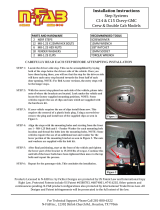
IoT Low Power Sensor Node Reference Design Board User’s Guide, Rev. 0, 09/2015
Freescale Semiconductor, Inc. 13
IoT Low Power Sensor Node reference design board
3.2.1 Bill of materials
Table 1. Bill of materials (common parts for all frequency bands) (Sheet 1 of 2)
Item Qty Reference Value Description Mfg. Name Mfg. Part Number
1 1 ANT1 MEANDER_ANT_
HORZ
PCB MEANDER ANTENNA HORIZONTAL,
NO PART TO ORDER
NO PART TO ORDER NO PART TO ORDER
2 1 BT1 TL5902/PT BATTERY 1/2AA LI-SOCI2 3.6V 1200MAH TADIRAN BATTERIES TL5902/PT
3 1 C1 1PF CAP CER 1PF 50V 5% C0G 0402 MURATA GRM1555C1H1R0CA01B
4 1 C2 1.8pF CAP CER 1.8PF 50V 0.25PF C0G 0402 MURATA GRM1555C1H1R8CA01D
5 1 C4 10PF CAP CER 10PF 50V 5% C0G 0402 AVX 04025A100JAT2A
6 2 C5,C7 33PF CAP CER 33PF 50V 5% C0G 0402 VENKEL COMPANY C0402C0G500-330JNE
7 1 C6 0.33UF CAP CER 0.33UF 6.3V 10% X5R 0402 MURATA GRM155R60J334KE01D
8 5 C8,C13,C14,C17,
C22
0.1UF CAP CER 0.1UF 16V 10% X7R 0402 KEMET C0402C104K4RAC
9 1 C18 0.47UF CAP CER 0.47UF 6.3V 10% X5R 0402 MURATA GRM155R60J474KE19D
10 1 C19 1000pF CAP CER 1000PF 50V 5% C0G 0402 MURATA GRM1555C1H102JA01D
11 2 C20,C21 11pF CAP CER 11pF 50V 1% C0G 0402 AVX 04025U110FAT2A
12 2 C23,C24 12PF CAP CER 12PF 50V 5% C0G 0402 MURATA GRM1555C1H120JZ01D
13 3 C25,C26,C28 0.1UF CAP CER 0.1UF 10V 10% X5R 0402 KEMET C0402C104K8PAC
14 1 C27 4.7uF CAP CER 4.7UF 6.3V 20% X5R 0402 VENKEL COMPANY C0402X5R6R3-475MNP
15 1 J1 hdr_2x5 HDR 2X5 TH 50MIL CTR 254H AU 91L SAMTEC FTSH-105-04-F-D
16 1 LED1 CLV1A-FKB-CJ1M
1F1BB7R4S3
LED RED BL GRN SGL 50/25/25mA SMT CREE, INC CLV1A-FKB-CJ1M1F1BB7
R4S3
17 1 L1 2.2nH IND -- 2.2NH@500MHZ 220mA 4% 0402 MURATA LQP15MN2N2B02
18 2 MH1,MH2 MH_80mil MOUNTING HOLE NON-PLATED 80MIL
TH NO PART TO ORDER
NA Mounting Hole - 80Mil drill
NPTH
19 5 R1,R2,R9,R13,
R14
0 RES MF ZERO OHM 1/16W 5% 0402 ROHM MCR01MZPJ000
20 1 R3 1M RES MF 1.0M 1/10W 5% 0402 PANASONIC ERJ-2GEJ105X
21 2 R4,R5 10K RES MF 10K 1/16W 5% 0402 VISHAY
INTERTECHNOLOGY
CRCW040210K0JNED
22 1 R7 DNP 0 RES MF ZERO OHM 1/16W 5% 0402 ROHM MCR01MZPJ000
23 3 R10,R11,R12 220 RES MF 220 OHM 1/16W 5% 0402 KOA SPEER RK73B1ETTP221J
24 3 SH1,SH2,SH3 0 ZERO OHM CUT TRACE 0402 PADS; NO
PART TO ORDER
LAYOUT ELEMENT ONLY LAYOUT ELEMENT ONLY
25 3 SW1,SW2,SW3 TL1015AF160QG SW SPST PB 50MA 12V SMT E SWITCH TL1015AF160QG
26 1 SW4 09.10201.02 SW SPDT RA SLD 12V 500MA TH EAO SWITCH 09-10201-02
27 10 TP1,TP8,TP9,
TP10,TP11,TP12,
TP15,TP17,
TP18,TP19
TPAD_030 TEST POINT PAD 30MIL DIA SMT, NO
PART TO ORDER
NOTACOMPONENT NOTACOMPONENT
28 1 TP7 TPAD_040 TEST POINT PAD 40MIL DIA SMT, NO
PART TO ORDER
NOTACOMPONENT NOTACOMPONENT
29 3 TP13,TP14,TP16
DNP
TEST POINT
WHITE
TEST POINT WHITE 40 MIL DRILL 180 MIL
TH 109L
COMPONENTS
CORPORATION
TP-105-01-09




















